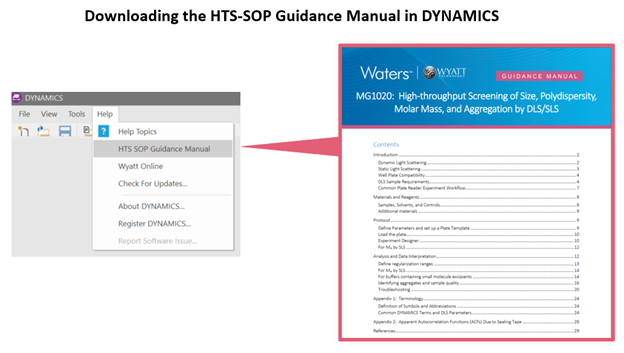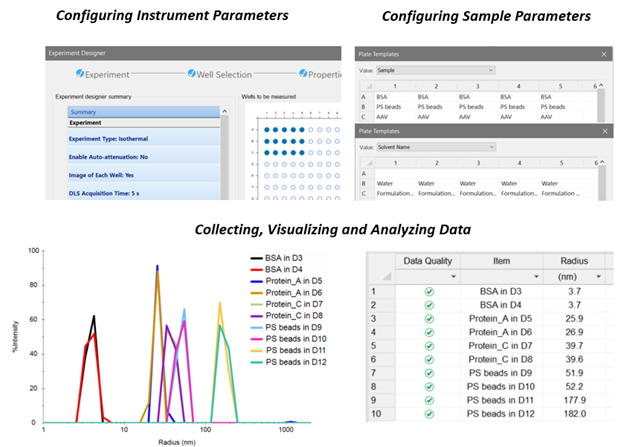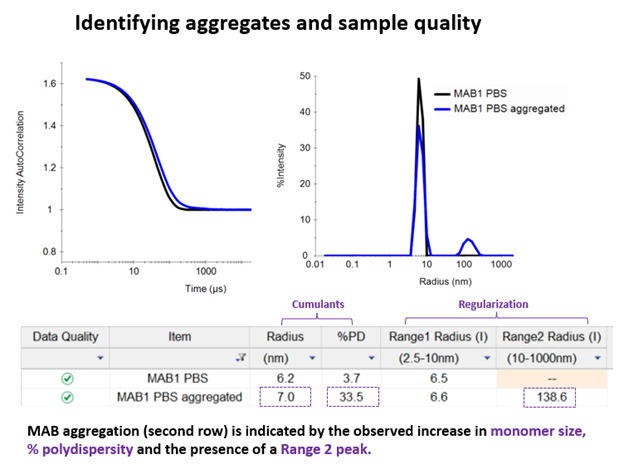Does Wyatt offer an all-inclusive SOP for DynaPro™ Plate Reader users?

Introduction
The MG 1020 High-throughput-DLS (HT-DLS) Guidance Manual, provides an all-inclusive learning resource and SOP manual for DynaPro Plate Reader users. Main topics include (i) best practices for sample preparation and running experiments, (ii) navigating and setting parameters in the DYNAMICS™ software as well as (iii) visualizing, analyzing, and troubleshooting results—with an emphasis on evaluating sample quality and various aggregation states. MG 1020 is freely available here for all users with registered accounts on our support center. Additionally, versions of DYNAMICS 8.3 and later enable users to easily access and download MG 1020 from within the Help menu of the main dialogue.
Connecting Light Scattering Theory to Wet-Lab Logistics
The HTS-DLS Guidance manual takes an applied approach to presenting light scattering theory, so that you can understand and apply core principles to optimize your wet-lab workflow. This is achieved sequentially, starting with a brief discussion about the physics pertaining to both Static Light Scattering (SLS) and Dynamic Light Scattering (DLS). Next, this information is seamlessly connected to a step-by-step SOP that highlights best practices and recommendations for executing both SLS and DLS wet-lab work. These protocols outline the materials and reagents that are necessary for executing your experiments, as well as providing detailed guidance for how to prepare and load your samples, solvents, and suitability standard/controls (if applicable) into your well plate.
Working in DYNAMICS software
A critical component to your light scattering research success is being able to efficiently and properly use your DYNAMICS software to organize your measurements, collect data, as well as analyze results. Using a variety of case studies and straightforward step-by-step instructions, the HTS-DLS Guidance Manual provides several protocols ranging from configuring Instrument and Sample parameters to visualizing and interpreting your data. Within this context, special emphasis is placed on guiding users how to fully implement all aspects of the Plate Template feature, including the override function. Additional instruction is also provided for using the Experiment Designer to streamline all high-throughput workflows. Finally, comprehensive directions and insights help users break down how to utilize both Cumulants and Regularization analysis to visualize, interpret and appropriately report results.
A Customizable SOP for Identifying Aggregates and Sample Quality
Overall sample quality and the presence of aggregates can be determined by reviewing the cumulants radius and %PD, regularization results, and molar mass (Mw-S). The HTS-DLS Guidance Manual overviews how to use these parameters to evaluate several common sample states, including monodisperse species, monomodal oligomeric aggregates, and several multimodal aggregate distributions. For each scenario, threshold values for expected size, polydispersity and MW-S are defined and correlated to their respective sample state. Users are encouraged to utilize this default criteria as a general SOP for identifying aggregates and assessing sample quality; additional criteria may be added to further customize this SOP according to each person’s research questions. Finally, a comprehensive troubleshooting guide is also provided to address common problems and issues associated with unexpected sample aggregation and or sample quality issues. Organized in a convenient table, this guide systematically identifies likely causes as well as provides potential solutions that can be used to augment your troubleshooting efforts.
Conclusion
The MG 1020 HT-DLS SOP Guidance Manual integrates background theory with best practices for wet-lab and software-based workflows with your DynaPro Plate Reader. Step-by-step protocols are provided, including how to set-up experiments, take measurements as well as interpret and report your results. Furthermore, comprehensive instructions and troubleshooting guidance are provided for analyzing sample quality and various sample aggregation states. DYNAMICS 8.3 versions and later include a link within the Help menu to download MG1020, but this resource is also freely available on website for customers with a registered Wyatt Support account (see https://www.wyatt.com/log-in.html for more details) .
Do you have a question? Contact our experts here in Customer Support. We’re happy to help! Call +1 (805) 681-9009 option 4.




